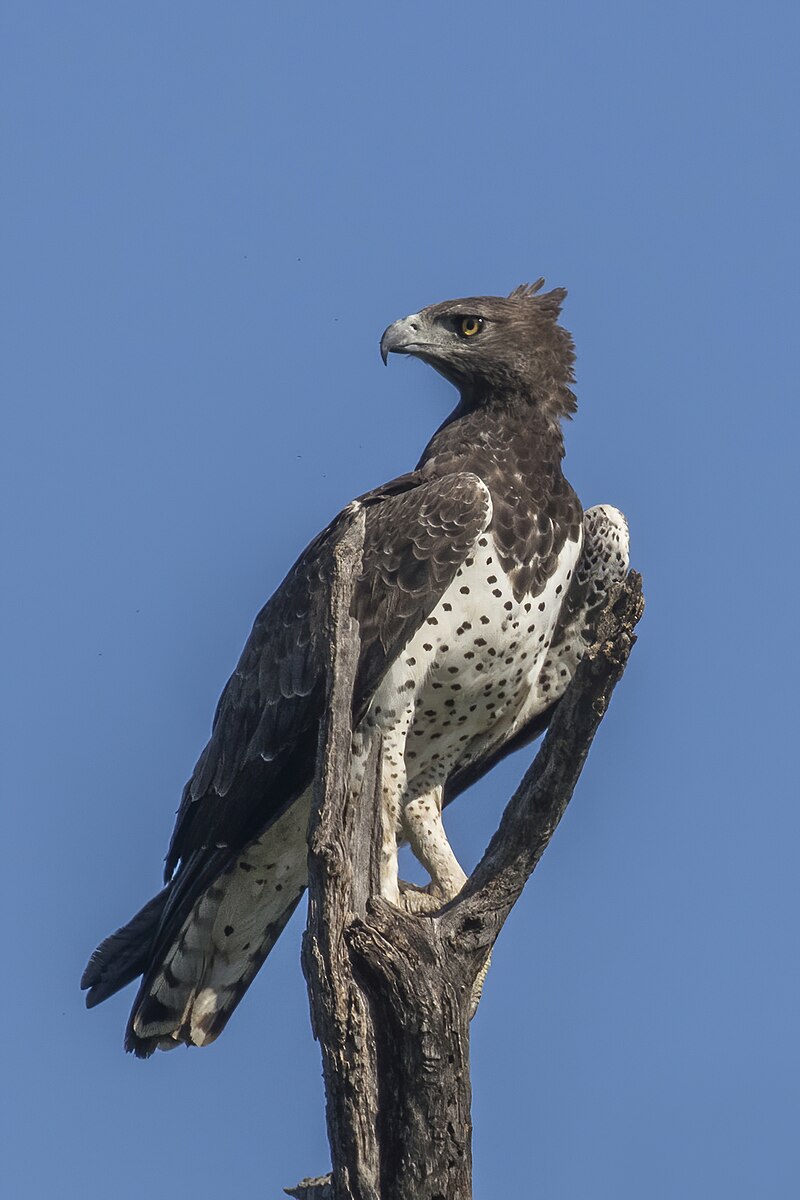Martial eagles, like many other birds of prey, cannot turn their heads 360 degrees, but they can rotate their necks up to around 270 degrees. This is due to the fact that their eyes are fixed in their sockets and cannot move like human eyes do. To compensate for this, birds of prey have evolved to have highly flexible necks, which allows them to look in different directions without moving their bodies.
The Anatomy of a Martial Eagle’s Neck
The martial eagle’s neck is designed for maximum flexibility and range of motion. The vertebrae in their necks are specially adapted to allow for a wide range of rotation and movement. This is achieved through a combination of factors:
- Flexible Vertebrae: The martial eagle’s neck vertebrae are more loosely connected than those of humans, allowing for a greater range of motion.
- Specialized Muscles: The martial eagle has a complex system of muscles that control the movement of its neck, enabling it to rotate its head and neck with precision and speed.
- Unique Bone Structure: The shape and arrangement of the martial eagle’s neck bones, including the atlas and axis vertebrae, allow for a greater range of motion compared to humans.
Hunting Strategies and the Importance of Neck Flexibility
 Image source: Martial eagle by Charles J. Sharp
Image source: Martial eagle by Charles J. Sharp
The martial eagle’s ability to rotate its neck is crucial for its hunting strategies. As an apex predator, the martial eagle needs to be able to scan its environment quickly and efficiently to locate and track its prey. The 270-degree range of motion in its neck allows the martial eagle to:
- Scan for Prey: The martial eagle can quickly scan its surroundings for potential prey without having to move its entire body.
- Track Moving Targets: Once the martial eagle has spotted its prey, it can keep its eyes locked on the target as it moves, thanks to the flexibility of its neck.
- Maintain Visual Contact: The martial eagle’s neck flexibility allows it to maintain visual contact with its prey even as it maneuvers in the air or on the ground.
Threats to the Martial Eagle
Unfortunately, the martial eagle is facing multiple threats that are putting its population at risk. These threats include:
- Habitat Loss: The destruction and fragmentation of the martial eagle’s natural habitat, such as large trees and open grasslands, is a major threat to the species.
- Poisoning: The use of toxic pesticides and other chemicals in the environment can lead to the poisoning of martial eagles and their prey.
- Electrocution: Collisions with power lines and electrocution from power poles are significant threats to martial eagles.
- Collisions: Martial eagles are also at risk of colliding with other man-made structures, such as wind turbines and communication towers.
Conservation Efforts
To help protect the martial eagle, it is important to raise awareness about the threats it faces and to work towards conserving its habitat. Some of the key conservation efforts include:
- Habitat Protection: Protecting large trees and open grasslands that serve as nesting and hunting grounds for martial eagles is crucial for the species’ survival.
- Reducing Poisoning: Promoting the use of eco-friendly and non-toxic alternatives to pesticides and other chemicals can help reduce the risk of poisoning for martial eagles and their prey.
- Mitigating Electrocution and Collisions: Implementing measures to prevent martial eagles from colliding with power lines and other man-made structures can help reduce these threats.
- Monitoring and Research: Ongoing monitoring and research on the martial eagle’s population, behavior, and habitat needs can help inform conservation efforts and guide decision-making.
By understanding the unique anatomy and hunting strategies of the martial eagle, as well as the threats it faces, we can work towards protecting this impressive bird of prey and ensuring its survival for generations to come.
References:
- Martial eagle – Wikipedia. Retrieved from https://en.wikipedia.org/wiki/Martial_eagle
- Why can many birds of prey rotate their head 360 degree? – Reddit. Retrieved from https://www.reddit.com/r/Ornithology/comments/18n3isi/why_can_many_birds_of_prey_rotate_their_head_360/
- Martial Eagle | The Peregrine Fund. Retrieved from https://peregrinefund.org/explore-raptors-species/eagles/martial-eagle/.

